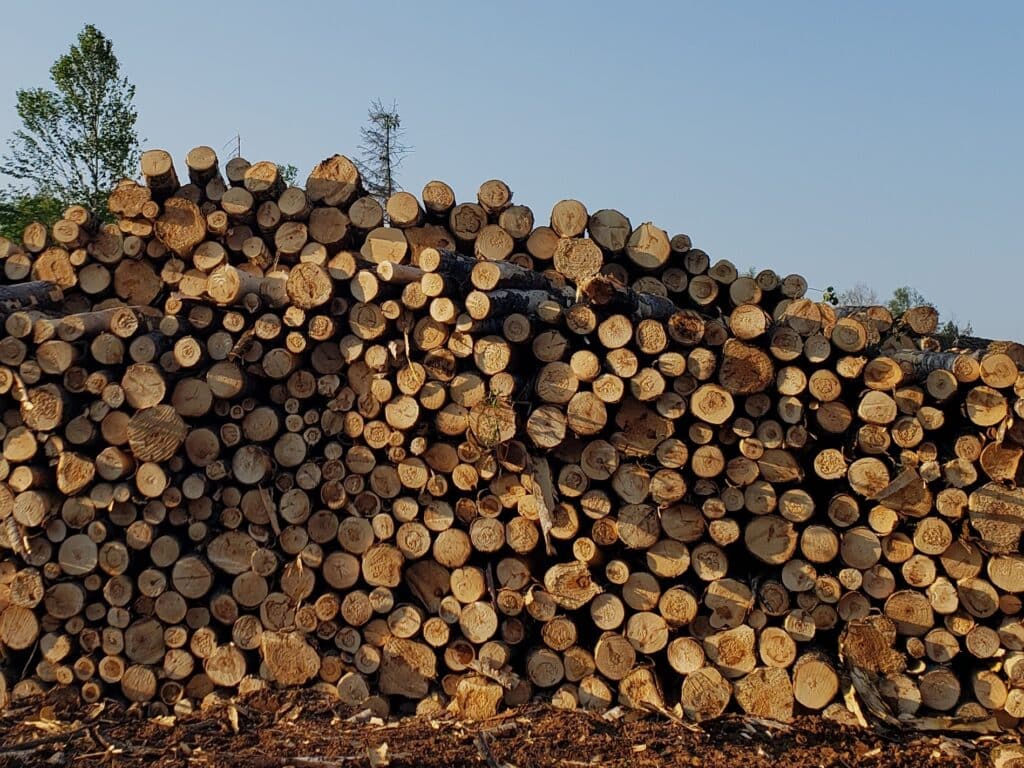
The U.S. Fish and Wildlife Service has found several examples of the Minnesota Department of Natural Resources misusing federal funds to facilitate logging in Wildlife Management Areas. While the federal government provides tens of millions of dollars in grants each year to support state habitat acquisition and management efforts, an audit in 2020 discovered that in some instances, forestry officials authorized logging in areas dedicated for wildlife, without any input from wildlife biologists.
A report drafted after a pair of federal biologists surveyed WMAs from southern to northern Minnesota was released last week after a Freedom of Information Act request. It is not clear why the report was never finalized and released, but the federal government has been withholding some funds for the DNR while the agencies work out reforms.
“Timber harvests conducted by DNR Forestry are decreasing the quality and quantity of wildlife habitat,” the report stated.
In 2020, the DNR announced it would increase the annual amount of wood harvested on state lands from 800,000 cords to 870,000 cords. The plan included increased logging in Wildlife Management Areas, which was to account for twelve percent of the increased harvest. Environmentalists and DNR employees warned at the time it would harm, not benefit, wildlife.
“This is a pretty blatant example of how we have a public resource being managed for a single special interest industry,’’ said Rich Staffon, president of the Duluth-area chapter of the Izaak Walton League of America and a retired DNR wildlife manager of 36 years, according to the Duluth News Tribune. “As a hunter, $4 of my small-game license goes to wildlife management areas, and I want them managed for wildlife, not for the timber industry.”
Over the past few years, the Fish and Wildlife Service has temporarily withheld habitat funding because of the DNR practices, and the DNR ultimately paused timber sales in Wildlife Management Areas. Now, the USFWS has said the DNR can resume the practice, but has imposed strict rules on the state agency. From now on, any logging projects in WMAs will have to be pre-approved by USFWS, including a site inspection and document review.
Wood vs. wildlife
The Public Employees for Environmental Responsibility (PEER) was responsible for the FOIA request that resulted in release of the draft document. The group says the new rules are the most rigorous penalty that USFWS has imposed on any state agency in decades.
“We commend the U.S. Fish & Wildlife Service for holding Minnesota to account for its out-of-control timber program that was damaging the wildlife habitat it was supposed to enhance,” said PEER’s Chandra Rosenthal. “By its long pattern of environmental violations, DNR has forfeited any benefit of the doubt it once enjoyed.”
State WMAs are supposed to be managed primarily for wildlife, while State Forests (and many other land management types) are generally promoted for timber production, according to both state and federal policy. But some logging can occur in WMAs — if it’s primarily done to benefit wildlife. Creating young forest can be beneficial to some species, as well as other strategies to improve habitat.
But that’s not what the DNR has been doing. The Fish and Wildlife Service biologists based in Bloomington visited Whitewater, Mille Lacs, and Red Lake WMAs in early 2020, and found numerous examples where wildlife considerations had been entirely ignored.
“Timber harvests monitored at [Red Lake] WMA, specifically Black spruce harvests, were completed without concurrence of wildlife management needs,” the federal scientists found.
Advocates say the logging is the result of pressure by industry. The Star Tribune reported that in 2021, Minnesota Forest Industries and Minnesota Timber Producers Association officials even suggested to the DNR that the long-time manager of the Red Lake WMA, Gretchen Mehmel, should lose her job after she objected to logging in the wildlife area. Mehmel was not fired but retired the following year.
The new requirements for the DNR to conduct timber sales on lands the federal government has provided wildlife funding for include submitting a form with details about the proposal. It must include information such as tree species, location, specific wildlife species it will benefit, how it will benefit wildlife, and more. The USFWS and DNR Wildlife division will also review sites after logging is completed to ensure compliance.
More information:
- Feds Put Minnesota DNR Logging on a Short Leash – Public Employees for Environmental Responsibility
- Minnesota DNR logs a failure in its handling of fish and wildlife land squabble – Star Tribune
- Fish and Wildlife report suggests improper use of federal wildlife funds – The Timberjay
- Experts clash over logging in wildlife areas – Agate

